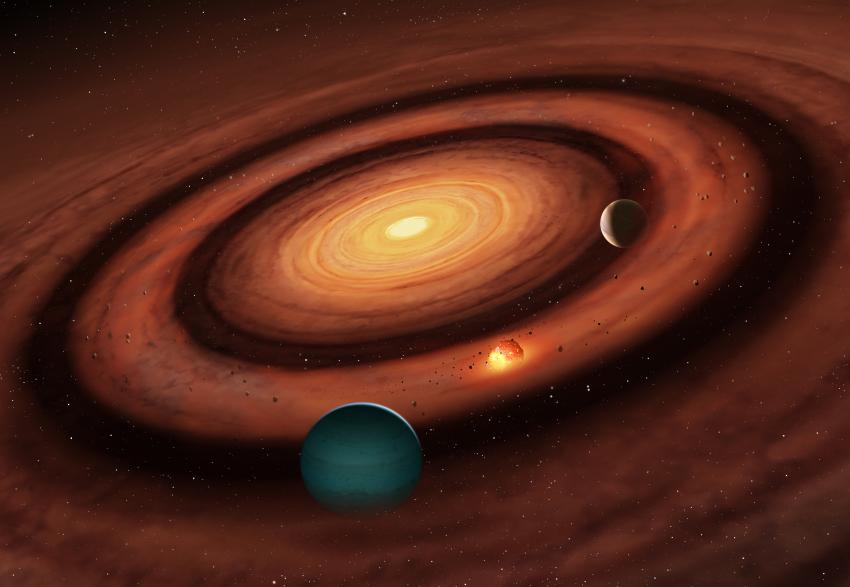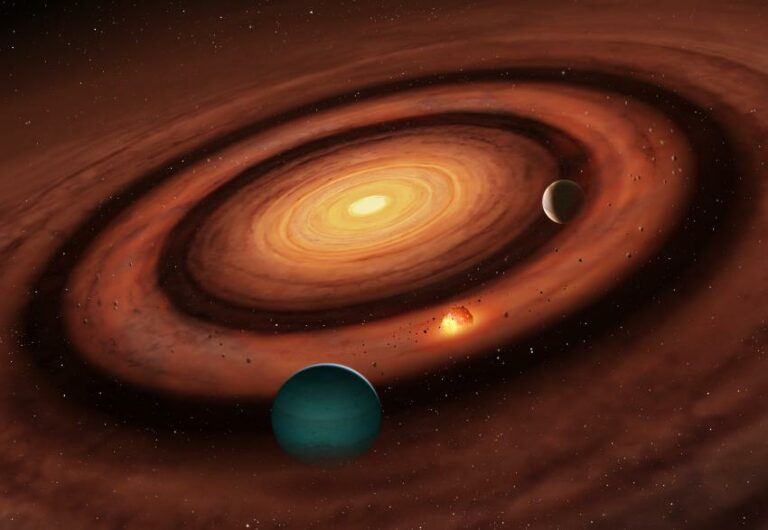Newly Unearthed ‘Sandwich’ Unveils Fresh Insights into the Origins of Planets
“Novel Planet Formation Mechanism Unveiled in Recent Discovery, Defying Previous Research Findings. Study Submitted to Monthly Notices of the Royal Astronomical Society and Presented at National Astronomy Meeting.”

Credit
University of Warwick/Mark A. Garlick
Licence type
Attribution (CC BY 4.0)
A groundbreaking study presented at the National Astronomy Meeting and submitted to the journal Monthly Notices of the Royal Astronomical Society has unveiled a previously undocumented method of planet formation in a specific region. Termed “sandwiched planet formation,” the research highlights the potential for two large planets in a protoplanetary disc to give rise to a smaller planet positioned between them.
The key to this phenomenon lies in the constriction of inward dust flow caused by the presence of the two larger planets. Consequently, the accumulation of dust between them is reduced compared to a scenario where there is no outer planet. As a result, if this dust were to eventually coalesce into a planet, the middle planet would likely be smaller in size than its neighboring planets—resembling the filling of a sandwich.
While further investigation is necessary, this theory offers a plausible explanation for the formation of small planets like Mars and Uranus, each surrounded by larger planets.
Associate Professor and Dorothy Hodgkin Fellow, Farzana Meru, from the Department of Physics at the University of Warwick, expressed enthusiasm for the recent advancements in the field of planet formation. The past decade has witnessed remarkable developments in observing protoplanetary discs, revealing the existence of rings and gaps. These gaps are believed to be sites of planet formation, with planets causing dust rings to form just beyond their positions. However, the precise mechanisms occurring within these rings have remained a captivating question for astronomers worldwide.
In this study, the researchers propose that the rings serve as locations for sandwiched planet formation, representing a departure from the conventional understanding of planet formation, where planets typically form sequentially from the inner to outer regions of the disc, gradually increasing in size. Remarkably, the team has discovered exoplanet observations that exhibit this sandwiched planet architecture, where the middle planet is less massive than its neighboring planets, constituting a significant proportion of planetary systems.
The advent of high-resolution images captured by the Atacama Large Millimeter/submillimeter Array (ALMA) telescope in the past decade has revolutionized the field of planet formation. These images provide crucial insights into the processes and evolution of planet formation, placing researchers at the forefront of this exciting area of study.
The study was funded by The Royal Society.
Do not forget to share your opinion with us to provide you with the best posts !




0 Comments